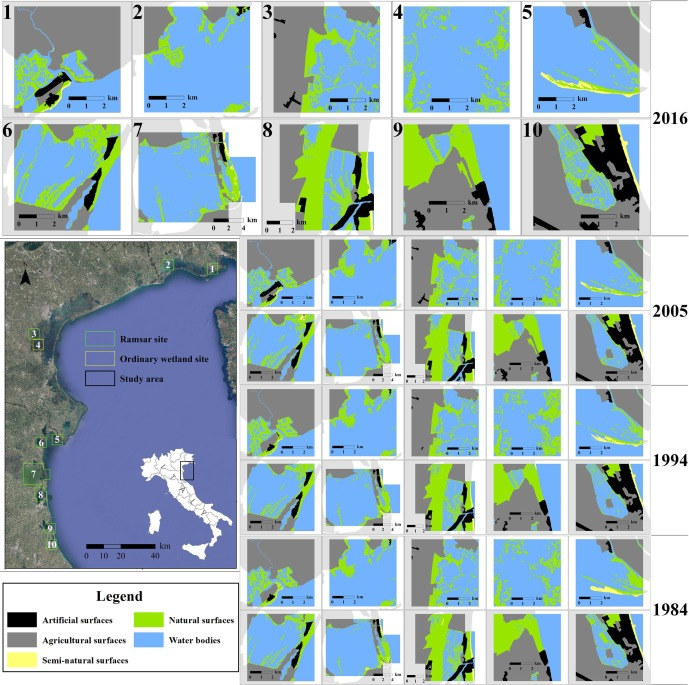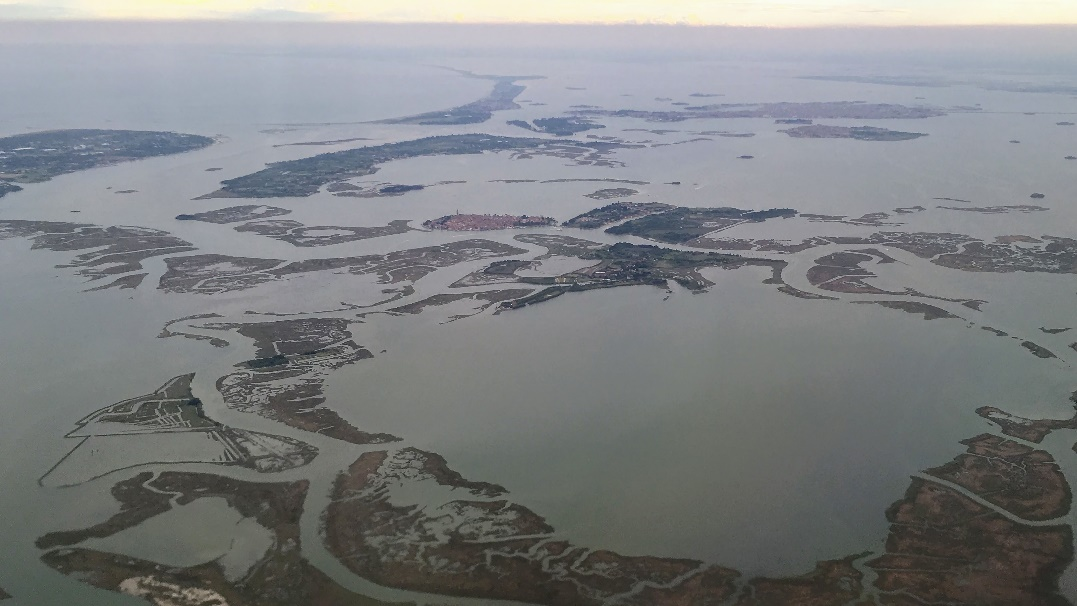Study Reveals the Dynamics of the Coastal Wetlands in Northeast Italy from 1984 to 2016
Date:03-08-2021 | 【Print】 【close】
Driven by strict reservation policy and contiguous aggressive anthropogenic activities, the continental coastal wetlands in the reserve area of NE Italy show the polarization phenomenon, according to a study conducted by the Shenzhen Institutes of Advanced Technology (SIAT) of the Chinese Academy of Science.
The study was published online on June 25, 2021.
The Adriatic coast of NE Italy is a representative area holding high ecological value in the Mediterranean. The researchers have monitored the environmental change (1984-2016) of the coastal wetland in ten study sites covering all the Ramsar sites and most of the natural reserve in NE Italy.

Fig. 1. Maps showing landuse in Northeast Italy in 1984, 1994, 2005, and 2016, clustered into five main categories (Image by SIAT).
"The change of the coastal wetland environment in this area is associated with a series of influential factors. Across the continental coastal wetland sites, environmental polarization effects have been strengthened by strict reservation policy and contiguous aggressive anthropogenic activities. It subsequently intensifies the anthropogenic pressure along the border and increases the vulnerability of the reserve”, said Dr. Jin Wang, the first author of the study, who is serving as an assistant professor at SIAT.
According to the co-author of the study, Prof. Jinsong Chen from ISAT, the landcover of the coastal wetland sites remained generally stable despite the continuous anthropogenic disturbance due to the robust reservation policies. However, wetlands located in the insular area are subject to more severe inundation impacts. As the sea-level rise shall be an inevitable trend, the survival of insular wetlands with low elevation will become more challenging in the future.

Fig. 2. Low-elevation insular coastal wetland in the Venetian lagoon (Photo by Jin Wang)
This study was jointly supported by the Strategic Priority Research Program of the Chinese Academy of Sciences, the NSFC-Guangdong Joint Foundation Key Project and the National Natural Science Foundation of China.
Media Contact:
SUN Lujia
Email: lj.sun @siat.ac.cn
Download the attachment: